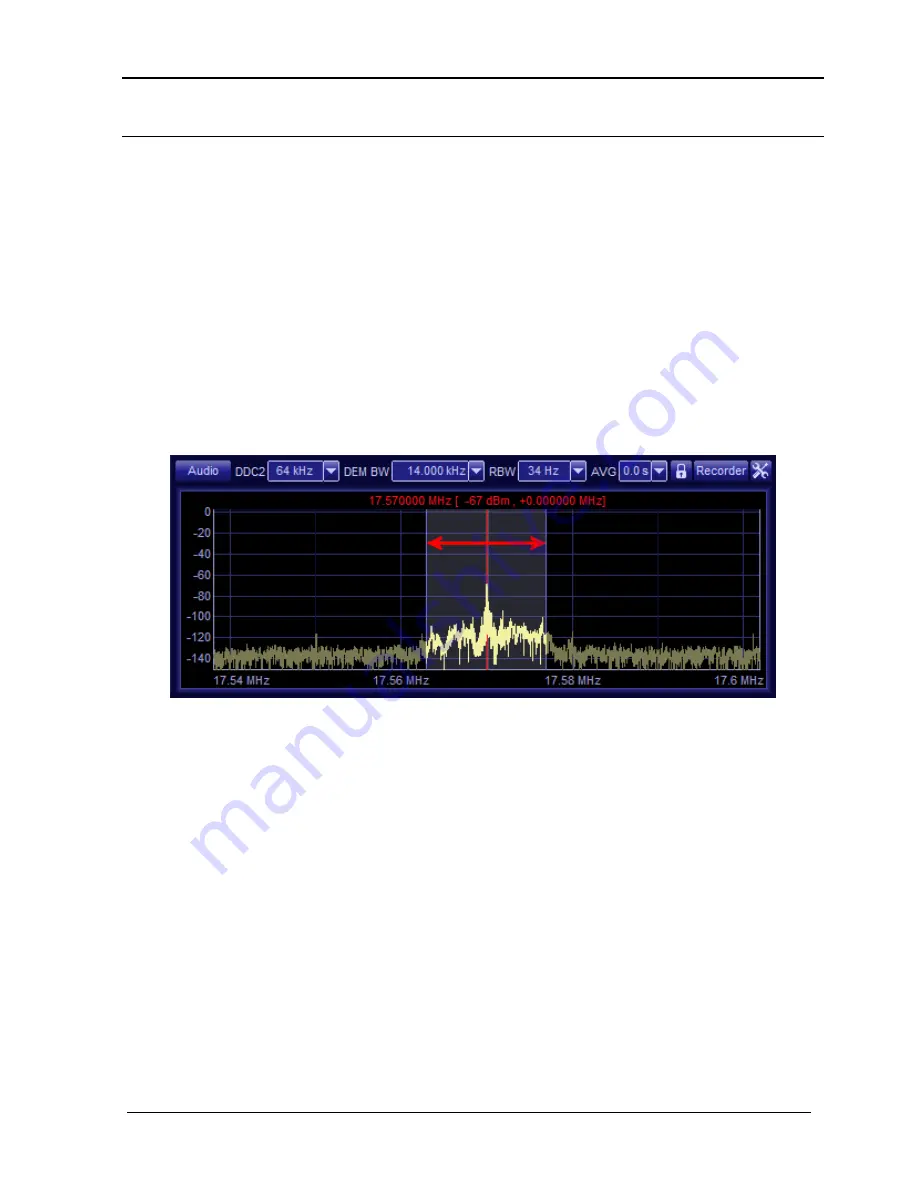
WiNRADiO G65DDC User’s Guide
29
IF Shift and Passband Tuning
Dragging the grayed-out demodulator filter passband in the demodulator
spectrum will result in tuning the receiver in a manner somewhat similar to the
IF Shift
function in conventional receivers. The passband will move inside the
displayed spectrum and the tuned frequency will change accordingly.
In a DDC-based receiver, “
IF Shift
” is in fact a misnomer because there is no
“intermediate frequency”, but as this is a time-honored and commonly used
term for this function, we will still use it here for convenience.
IF shift makes it possible to tune the receiver by positioning the demodulator
filter precisely over the spectrum of the received signal, while keeping the DDC
passband located exactly where it is.
This makes it possible to quickly and visually tune to another station
represented by a signal peak in the spectrum. However, it is not very suitable
for the AMS, USB, LSB, ISB, DSB and CW modes if you only wish to adjust
the filter passband position slightly for the station you are currently receiving
(for example in order to avoid interference from an adjacent channel).
If you do this, when you are for example, tuned to an AM station using the
AMS mode, or an SSB station using the USB or LSB modes, then moving
away from the exact carrier frequency will result in a whistle being heard, its
pitch being directly proportional to the IF shift displacement. This is because
while you have changed the tuned frequency, you have not changed the
“BFO” (or rather the digital equivalent of it) simultaneously.
To make it possible to move the filter but still remain tuned to the same
frequency, there is also an associated
Passband tuning
function: This is
















































